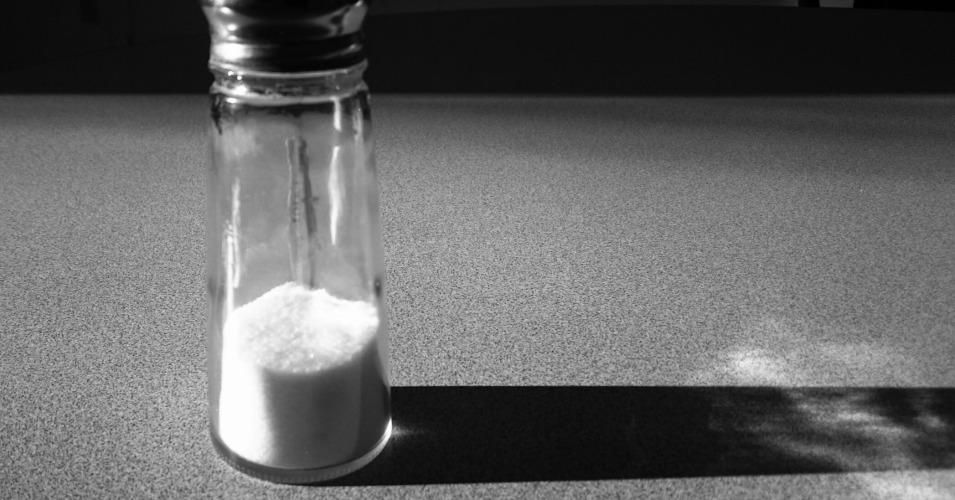Found in 90 Percent of Table Salt Brands, Study Finds Average Adult Ingests 2,000 Pieces of Microplastic Per Year

A year after researchers at a New York university discovered microplastics present in sea salt thanks to widespread plastic pollution, researchers in South Korea set out to find out how pervasive the problem is—and found that 90 percent of salt brands commonly used in homes around the world contain the tiny pieces of plastic.
The new research, published in the journal Environmental Science & Technology,suggests that the average adult ingests about 2,000 microplastics per year due to the presence of plastics in the world's oceans and lakes.
"The findings suggest that human ingestion of microplastics via marine products is strongly related to emissions in a given region." —Seung-Kyu Kim, Incheon National University
Examining 39 brands sold in 21 countries, researchers at Incheon National University and Greenpeace East Asia found microplastics in 36 of them. The three table salts that did not contain the substance were sold in France, Taiwan, and China—but Asia overall was the site of some of the worst plastic pollution.
The study "shows us that microplastics are ubiquitous," Sherri Mason, who conducted last year's salt study at the State University of New York at Fredonia, told National Geographic. "It's not a matter of if you are buying sea salt in England, you are safe."
Greenpeace East Asia found a strong link between the level of plastic pollution in a given part of the world and the amount of microplastics people in those regions are inadvertently ingesting each year.
"The findings suggest that human ingestion of microplastics via marine products is strongly related to emissions in a given region," Seung-Kyu Kim, a co-author of the study, told National Geographic.
Nat Geo Travel put it succinctly on Twitter:
The more we consume plastics, the more we literally consume plastics https://t.co/6d1SZ9YG65
— Nat Geo Travel (@NatGeoTravel) October 18, 2018
Indonesia, it was found in an unrelated 2015 study, has the world's second-highest level of plastic pollution. The researchers in South Korea discovered that the country's table salt brands also contain the most microplastics.
"That fact that they found higher counts in Asia is interesting. While not surprising, you still have to have the data," Mason said. "The earlier studies found traces of microplastics in salt products sold in those countries, but we haven't known how much."
Erik Solheim, the executive director of the United Nations Environmental Program, called the study "more evidence of the frightening proliferation of plastic pollution"—and expressed hope that studies like this one would encourage more governments and companies around the world to sharply reduce their use of plastics.
More evidence of the frightening proliferation of plastic pollution.
World must keep up momentum to deal with this once and for all. With a bit of resolve, it's an easy environmental win!https://t.co/385ZvLR93g
— Erik Solheim (@ErikSolheim) October 18, 2018
This work is licensed under a Creative Commons Attribution-Share Alike 3.0 License
Related Articles:
Plastic trash is littering the land and fouling rivers and oceans. But what we can see is only a small fraction of what’s out there. Since modern plastic was first mass-produced, 8 billion tons have been manufactured. And when it’s thrown away, it doesn’t just disappear. Much of it crumbles into small pieces.
Apple is likely to stop producing iPhone X smartphones, according to Mirabaud analyst Neil Campling. The oversupply of chips and high prices are the reason, he says.
The proliferation of microplastics in the ocean has led to concerns that they might work their way up the food chain to us.
New studies find microplastics in salt from the US, Europe and China, adding to evidence that plastic pollution is pervasive in the environment. Sea salt around the world has been contaminated by plastic pollution, adding to experts’ fears that microplastics are becoming ubiquitous in the environment and finding their way into the food chain via the salt in our diets.
Microplastic contamination has been found in tap water in countries around the world, leading to calls from scientists for urgent research on the implications for health.
Tiny pieces of plastic are making their way into fish and shellfish found at the supermarket, a new study has shown. The findings are part of a report prepared for the International Maritime Organization, the UN agency responsible for preventing marine pollution.
For years, cosmetic, toothpaste, and body care product manufacturers added “microbeads,” microscopic balls of plastic, to their merchandise, touting their skin-exfoliating effects. A Congressional ban that goes into effect beginning in 2017 will put an end to the environmentally toxic practice, at least in the US.
Scientists have discovered that various brands of table salt sold in China contain a range of plastic pollution, which might make food unsafe. The highest proportion of plastic was found in sea salt, according to a paper from researchers at Shanghai’s East China Normal University. But even salt from salt mines, briny lakes, and wells contained significant amounts.



